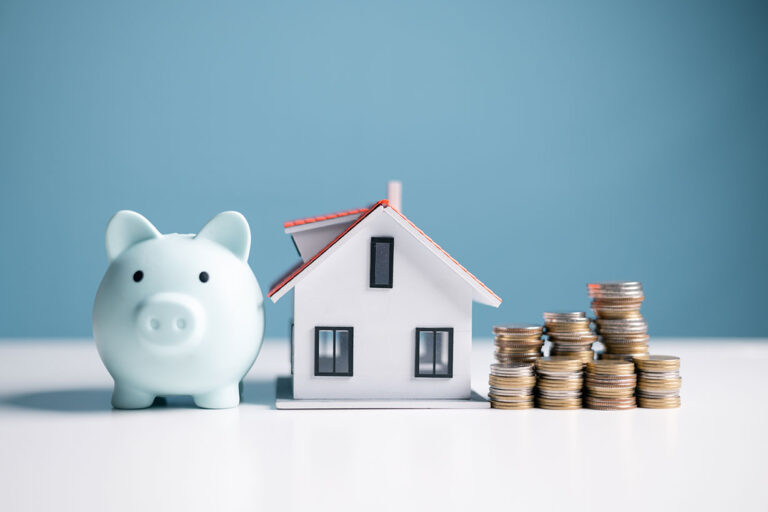Malta is a paradise. And that fact is certainly not lost on the international real estate market. In particular, Americans in greater and greater numbers are discovering the archipelago and are looking to buy property here.
The government has made it fairly easy for Americans to do just that. And if you play your cards right, your purchase could pave the way for full long-term residency and even citizenship.
This guide teaches you about the market, what you need to know about the laws, and how taxes will work. We’ll even take you step-by-step through the process of buying property in Malta as an American.
Malta’s Real Estate Market: Why It’s Booming
Malta’s property market has recorded consistent price appreciation—6–7% in the past year alone. Prime areas like Sliema, Valletta, and St. Julian’s can see million-euro listings. High demand stems from both local buyers (Maltese home-ownership is around 82%) and a surge of foreign investors, including Americans.
There’s many reasons for this. 300+ sunny days per year, laid-back lifestyle, and English as an official language. It’s like the perfect American getaway. Crime rates are low, and healthcare and infrastructure are strong, too. So there’s a lot to love.You can also make money by investing in rental properties. That’s thanks to high levels of tourism and a growing expat community. Many buyers invest in apartments aimed at short- or long-term rentals, especially in resort or business hubs like Sliema and St. Julian’s.
But moving here to live is highly encouraged by a spate of government programs rewarding foreign investment through tax breaks and residence-by-investment schemes.
Legal Framework for Americans
In certain upscale developments—known as Special Designated Areas (SDAs)
—Americans buy property with essentially the same rights as Maltese citizens. There’s no permit requirement, no cap on how many properties you can own, and you can rent them out freely. SDAs typically feature luxury amenities such as pools, gyms, marinas, and secure access.
Acquisition of Immovable Property (AIP) Permit
If you buy outside an SDA, you need an AIP permit as a non-EU citizen.
Key rules:
- You’re limited to one property outside SDAs.
- A minimum value threshold applies (roughly €174,000 for apartments, €300,000+ for houses, subject to annual updates).
- You cannot rent out a non-SDA home purchased under AIP. It must be for personal use.
- The permit process is straightforward, usually taking about 35 days, with a fee of €233.
Residency Status
Owning property doesn’t automatically give Americans the right to live in Malta full-time. If you want to settle permanently or rent out a non-SDA property, you’ll need a suitable residency permit or invest in an SDA development to bypass the usual restrictions.
Residency Programs for Property Buyers
There are actually many ways that buying property in Malta can put you on track to residency or even full citizenship.
Malta Permanent Residence Programme (MPRP)
Referred to as a “Golden Visa,” the MPRP grants permanent residence if you invest in real estate (minimum €300,000–€350,000, depending on the area) and pay additional government fees. Perks include a Schengen-area travel allowance and the right to live in Malta indefinitely, though MPRP itself doesn’t lead to citizenship.
Learn more about the Malta Golden Visa here.
Global Residence Programme (GRP)
Aimed at non-EU nationals seeking beneficial tax status, the GRP requires purchasing or renting property at lower thresholds (e.g., €275,000+ purchase) plus a flat 15% tax on foreign-source income remitted to Malta. This program grants a renewable residence permit but not permanent residency—ideal for high-net-worth individuals wanting tax advantages and an EU base.
Citizenship by Investment
Malta also offers a separate, more expensive route toward citizenship (formerly known as the Individual Investor Programme). It requires a much heftier commitment—property worth €700,000+ or rental at €16,000/year, plus significant donations and investments. This path is for ultra–high net worth individuals.
Financing Options
Major local banks (e.g., HSBC Malta, Bank of Valletta) offer loans to foreign buyers under certain conditions:
- Loan-to-Value: Typically 80% for non-residents, meaning you’ll need at least a 20% down payment.
- Term: Usually 20–30 years, often influenced by your age at maturity.
- Documentation: Expect to provide payslips, tax returns, bank statements, a property valuation, and proof of identity. Banks also require life insurance and home insurance.
- Approval Timeline: Organize pre-approval early to confirm how much you can borrow and set your budget accordingly.
Some Americans use U.S.-based resources—like refinancing a home back home—to fund a Maltese purchase. Keep currency fluctuations in mind, as your new property and expenses will be in euros.
Purchase Process: Step by Step
- Set Your Budget and Team Up
Determine if you’re buying with cash or a mortgage and line up a notary (required in Malta), a real estate agent, and optionally a lawyer or architect. Agents typically work on the seller’s commission, so as a buyer you don’t usually pay their fees. - Property Search
Check if the property is in an SDA (easier rules) or requires an AIP permit. View listings in person if possible. An on-the-ground visit helps you gauge neighborhood vibes, noise, and infrastructure. - Promise of Sale (Konvenju)
Once you agree on a price, the notary drafts a preliminary agreement. You’ll pay a 10% deposit and 1% of the 5% stamp duty upfront. The Konvenju binds both sides: if the buyer pulls out without reason, they forfeit the deposit; if the seller backs out, they owe double. - Due Diligence Period
- Notary Searches: Ensures the title is clear and free of liens.
- AIP Permit: If applicable, submit your paperwork.
- Mortgage Finalization: Bank appraises the property; you gather additional documents.
- Inspections: It’s wise to hire a surveyor, especially for older properties.
- Final Deed (Closing)
Typically within 3–4 months, you’ll sign the final deed in front of the notary, pay the remaining 4% stamp duty, settle notary fees, and transfer the rest of the purchase price (90% if you paid a 10% deposit). The property keys are handed over, and the sale is registered in your name.
Taxes and Costs
Stamp Duty
A one-time 5% charge on the property price (1% paid at Konvenju, the remaining 4% at closing). Residents, first-time buyers, or special incentives may qualify for lower rates, but generally, Americans pay 5%.
Notary Fees
Usually 1–2% of the purchase price (plus VAT), covering title searches and registration. A separate lawyer fee applies only if you opt for additional legal counsel.
AIP Permit Fee
€233 if you buy outside an SDA and are a non-EU citizen.
No Annual Property Tax
Malta does not levy annual property taxes. You’ll only pay monthly utilities and condo fees (if applicable).
Capital Gains on Resale
If you sell and haven’t lived in the property as your primary residence for at least three years, an 8% final withholding tax applies on the sale price. But if it’s your main home for three years or more, you may be fully exempt.
Congratulations! You Own Maltese Property
What an exciting prospect—owning your own piece of this stunning country.
It can make for an incredible vacation home. It can make for a solid investment. But it can also open the door to dual citizenship.
Learn more about that journey to become an American-Maltese dual citizen here.



